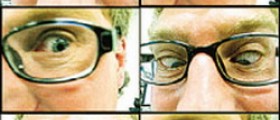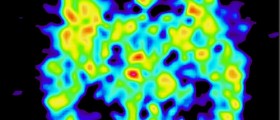
Acute angle closure glaucoma is without doubt one of the most significant eye emergency problems. The condition occurs rapidly and only in few hours a person may fully develop intensive eye pain, nausea and severe loss of vision. If not treated on time or left untreated loss of vision is permanent. The condition is treatable and can be sometimes discovered accidentally during routine eye examinations.
In acute angle closure glaucoma there is sudden and rapid increase in the pressure inside the eye. The iris is pushed or pulled up against the trabecular meshwork at the angle of the anterior chamber which makes inadequate draining of the fluid inside the eye and its consequent accumulation and buildup. This is the reason why intraocular pressure suddenly rises.
What Causes Acute Angle Closure Glaucoma?
As it has already been mentioned the condition develops as a consequence of pushing forward the iris against the trabecular meshwork or pulling up the iris against the trabecular meshwork. The symptoms of the condition develop rapidly and suddenly. Damage to the optic nerve is serious and if not treated quickly one may lose eye sight. One of potential inductors of the condition is dilation of the pupils performed during routine eye examination.
Clinical Characteristics of Acute Angle Closure Glaucoma
Intraocular pressure rises quickly. Therefore, patients commonly complain about sudden and intensive eye pain, nausea, vomiting, headache, blurred vision and profuse tearing. One more characteristic of the condition is halo which is normally seen by a person suffering from acute angle closure glaucoma.
In case of sub-acute angle-closure glaucoma people may complain about mild pan, slightly blurred vision and they may also see haloes around lights.
Treatment for Acute Angle Closure Glaucoma
The condition is generally treated with laser or surgical therapy. The most commonly performed procedure in case of acute angle closure glaucoma is laser iridotomy. The procedure includes creation of a hole in the iris with the assistance of laser. This hole allows proper drainage of the fluid inside the eye and prevents fluid buildup. In case it is not possible to perform laser iridotomy a person undergoes a surgical/incisional iridectomy.
Before one undergoes one of the previous two procedures he/ she is administered specific medications. They prepare the person for the operation. These medications are necessary since they reduce the pressure inside the eye. They are available in a form of eye drops and can be easily applied. Unfortunately, the medications are not able to control the condition permanently and this is why people must eventually go surgical correction.

















Your thoughts on this
Loading...